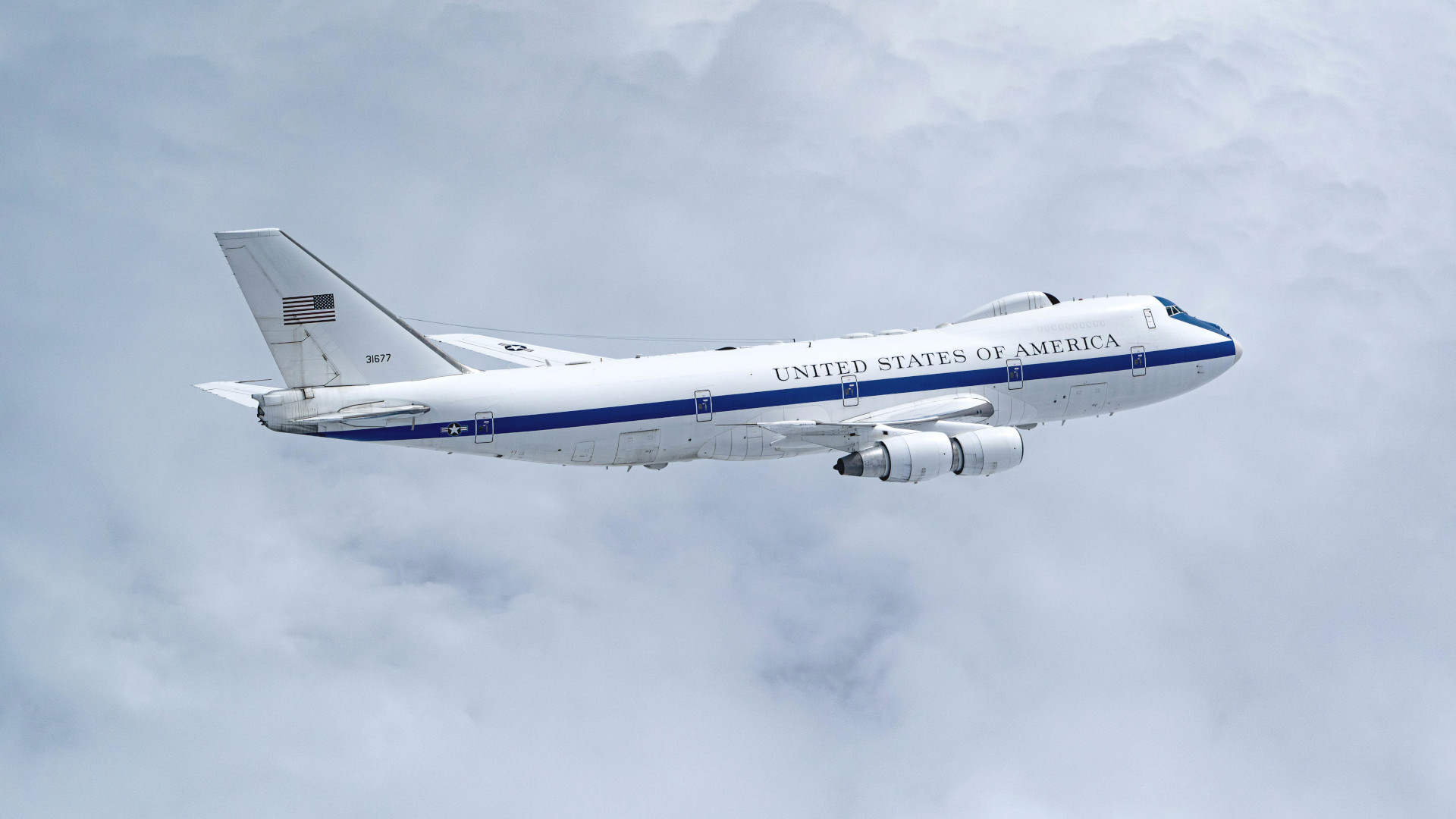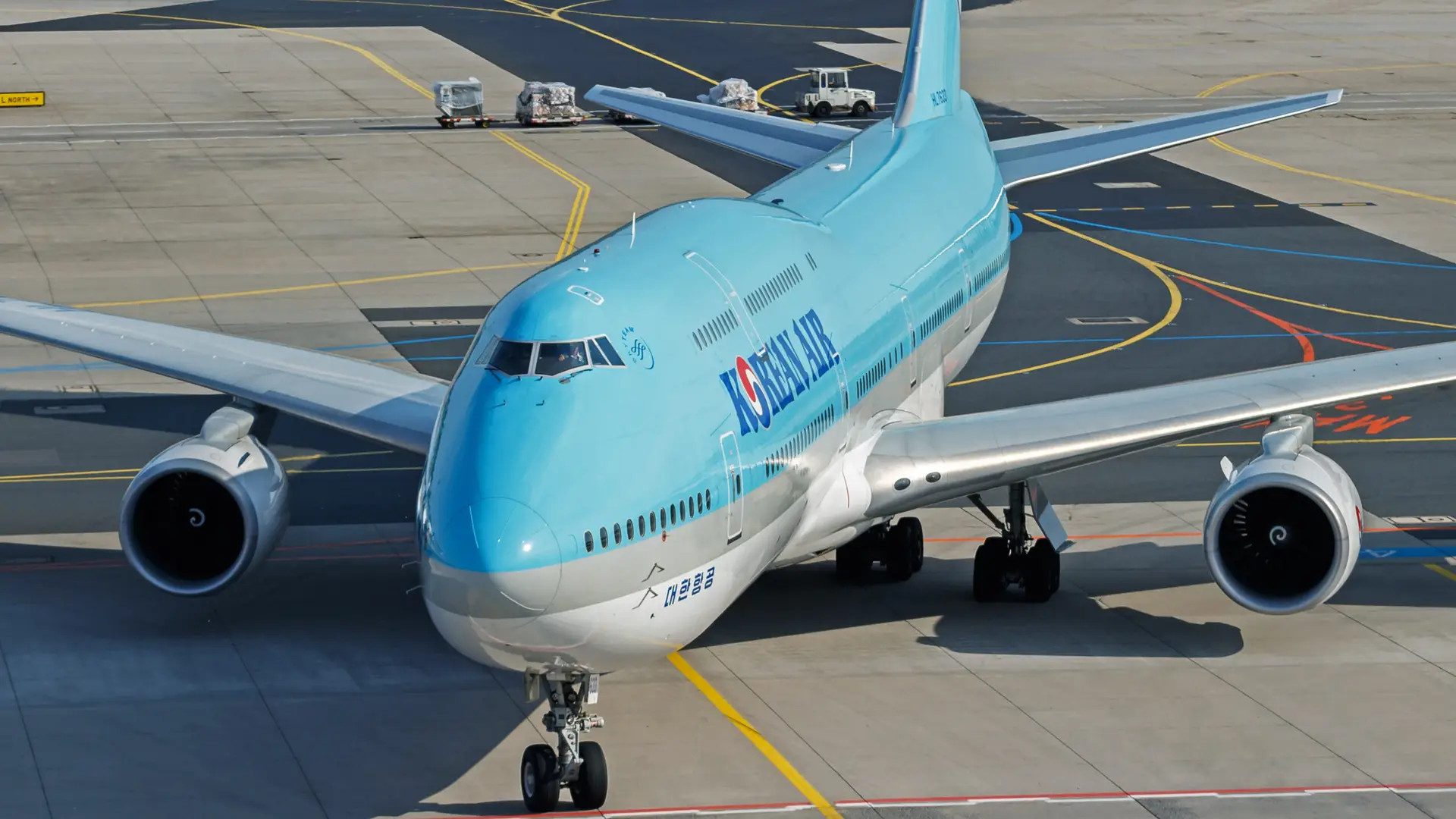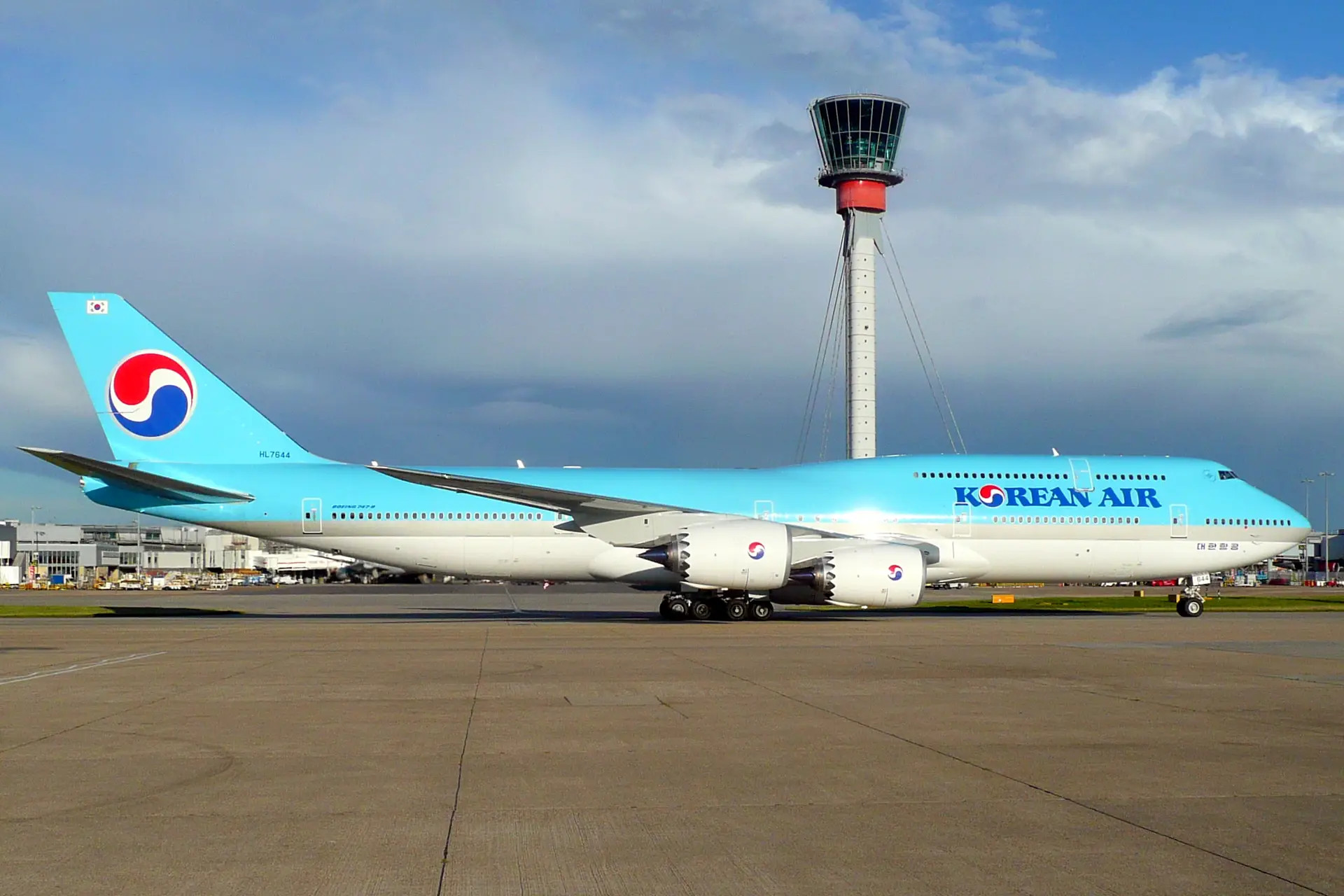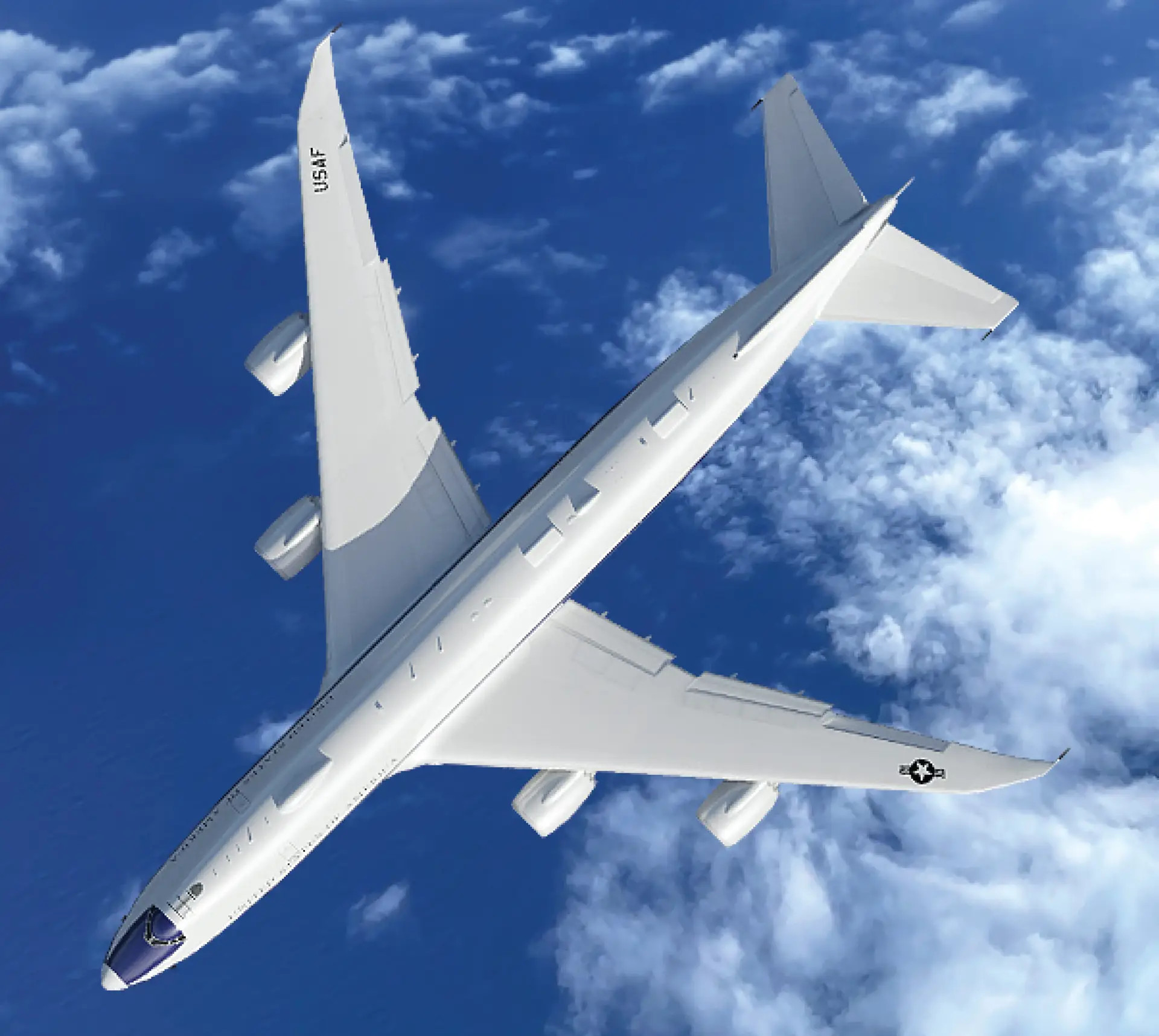The Sierra Nevada Corporation (SNC) says the first ex-Korean Air Boeing 747-8i airliner destined to become one of the U.S. Air Force’s next ‘doomsday planes’ will be arriving at its facilities soon. This announcement comes just shy of a month after the company received the multi-billion-dollar Survivable Airborne Operations Center (SAOC) contract to produce the successors to the Air Force’s four aging 747-200-based E-4B Nightwatch aircraft. The SAOC jets are set to perform the same general missions as the existing E-4Bs, which involve making sure the President and other senior military officials can perform their duties, including directing nuclear strikes, during even the most serious crises.
Brady Hauboldt, SNC’s Vice President of Aviation Strategic Plans and Programs, shared this and other details about the company’s plans for SAOC in an interview with The War Zone yesterday.

“Very soon you’ll see the first aircraft arriving… as we start this journey,” he said.
It first emerged earlier this month that SNC was acquiring five 747-8i airliners from Korean Air for conversion into SAOCs.
“We did a pretty exhaustive analysis of the worldwide fleets of aircraft, different variants, different ages, and different owner/operators, and settled on the optimal solution for the DoD [Department of Defense] as the 747-8i aircraft,” Hauboldt explained. “There are some additional complexities involved with the [747-8F variant] freighter aircraft that caused us to move away from those. Without getting into the specific details of why, the passenger aircraft were [determined to be] optimum.”

Regardless, “there were no active production lines of aircraft that could meet the customer’s requirements,” Hauboldt highlighted.
As The War Zone and others had reported in the past, the Air Force’s requirement for SAOC to be a four-engine aircraft, combined with operational security and other requirements, had effectively precluded any proposals not involving a version of the 747. Boeing shuttered the 747 production line in 2022 after more than five decades.
“So, as we settled into that corner of the aviation industry, we then did a more thorough analysis of the current owner/ operators,” Hauboldt continued. “[We] determined that South Korean Airlines [Korean Air] is an exceptional maintenance provider. [The] quality of their maintenance of records is among the best in the world. And then [they] were [also] in a position to part with their aircraft.”
“These aircraft are in exceptional condition. They have been flying passengers regularly since they were produced. They’re not that old. But they are in very, very good maintenance and operating condition,” he added. “Of course, as they come into our facility for modification we will go through them at the time to make sure they’re in tip-top condition, and refurbish or overhaul any components that need to prior to delivery to the U.S. Air Force.”
It’s unknown which of Korean Air’s nine 747-8is SNC has bought, but the very oldest of the jets was also delivered to the airline in 2015, making it a relatively young fleet. It includes the last-ever passenger version of the 747-8 ever produced. Still, as The War Zone has previously noted, they will have experienced the normal wear and tear associated with regularly flying passengers.

Currently, SNC says it has negotiated the purchase of five 747-8is from Korean Air, but the total size of the SAOC fleet could be larger. It has been suggested that the Air Force could acquire up to between eight and 10 of these jets in the end. Questions remain about whether the SAOCs could also take over the Looking Glass airborne command post and ground-based ballistic missile launching duties after the U.S. Navy retires its aging E-6B Mercury aircraft. The E-6Bs currently support the Navy’s Take Charge and Move Out (TACAMO) mission, involving communicating with submerged nuclear ballistic missile submarines, and serve in the Looking Glass role. However, the Navy’s planned E-6B replacement, which will be based on the turboprop C-130J Hercules, will only be configured to perform the TACAMO mission.
Hauboldt could not speak to the SAOC fleet size questions directly, but said his company is “prepared to support the Air Force’s objective fleet size.”
Details about the expected configuration of the SAOC aircraft are unsurprisingly sensitive given their intended missions. The future ‘doomsday planes’ will demand communications suites that are advanced and highly secure, as well as extremely reliable, along with hardening against electromagnetic pulses that come after nuclear detonations and an array of other specialized capabilities. The War Zone has already explored in detail what can be seen of the future SAOC configuration from rendering SNC has released to date, analysis that you can find here.
“The Air Force’s requirements were generally for a similar type of capability as the E-4B Nightwatch has today. But as a 50-year-old aircraft that has been modified over its life, it has… a large number of aging subsystems on it,” according to Hauboldt. “A big part of this effort is modern technology, modern computing, modern versions of old things that outperform the machine today on the E-4B Nightwatch.”
“It will not only have fresh systems on it, but systems that provide higher reliability [and] maintainability,” he added.

SNC also says the SAOC conversion process will have a modular open system architecture approach at its core that will make it easier to integrate new and improved capabilities in the future.
This “really is a significant shift in the commercial-derivative aircraft modification market, because a modular open systems architecture allows you to separate yourself from the OEM [original equipment manufacturer], the commercial IP [intellectual property], the flight critical aspects of it. It reduces your airworthiness risk, but it also opens up the architecture on the other side,” Hauboldt explained. “So the aircraft is more cost-effective to maintain… [across] its lifecycle and much easier to integrate emerging technologies. So with an open architecture, we believe that the Air Force will be able to reap dividends for decades to come with the SAOC platform for both sustainment and modification.”
Just using newer versions of the 747 to create the SAOC will offer benefits over the E-4Bs and the 1970s-era 747-200s they’re based on.

“So, it’s in the public domain, certainly that the E-4B is one of the most costly, if not the most costly aircraft in DoD inventory to operate. The flying hour costs associated with that airframe, and its aging and obsolescence challenges that it has make that a very, very expensive aircraft,” Hauboldt said. “The Air Force needed new iron, a fresh set of legs if you will.”
A 2022 GAO report put the cost-per-flight-hour to operate a single E-4B at $372,496, and also noted this was a nearly 15 percent increase from 2019. For comparison, that same report said the price of flying a B-2 Spirit stealth bomber, one of the most complex and maintenance-intensive aircraft in Air Force inventory today, for an hour was $150,741.
As The War Zone has noted in the past, the SAOC contract presents real risks and the prospect for significant rewards for SNC. The deal, which is valued at close to $13 billion, is “one of the largest aircraft modernization contracts awarded to a company other than the original aircraft manufacturer (OEM),” according to a press release the company put out yesterday. At the same time, SNC has very much made a name for itself in the special mission aircraft conversion and modification business, especially for U.S. government customers.
“We do a lot of special mission, all-domain command and control-type work… and that’s exactly what this is. Integrating mission systems, communications, antennas, radios on aircraft, it’s really what we do,” Hauboldt said. “And I sometimes get asked, ‘well, how can we do a 747.’ Well frankly, the space, weight, and power available on a 747 is [among the] largest in the world… Integrating complex communication systems onto a large aircraft is far easier than doing so on small aircraft.”

SNC isn’t entirely alone on this, either. Yesterday, the company announced that its industry team on SAOC also includes Collins Aerospace, FSI Defense, GE Aerospace, Greenpoint Technologies, Lockheed Martin Skunk Works, and Rolls-Royce. All of these companies have significant aviation and defense industry experience, but Skunk Works, Lockheed Martin’s famous advanced projects division, is a particular stand-out inclusion here.
“In this case, they [Skunk Works] are not only a like-minded mission partner with us, but they bring the depth and breadth of one of the largest aircraft, aerospace, and defense firms in the world to the team,” Hauboldt said when asked about their specific role. “So we’re going to be able to leverage that strength, the depth and breadth, here on SAOC as we grow, ramp up, and start entering the design phase.”
“Lockheed Martin Skunk Works is ready to provide affordable, low-risk, and technically mature solutions to the U.S. Air Force’s Survivable Airborne Operations Center (SAOC),” a spokesperson for Skunk Works also said in response to separate queries from The War Zone.
When the first SAOC aircraft will actually be delivered to the Air Force remains unclear. When asked, Hauboldt said he could unfortunately not share details about the program’s current expected schedule.
“We are setting out on our preliminary and critical design phase,” he said “So there’s a lot of work yet to be ahead of us.”
Still, with the arrival of the first donor 747 aircraft looking imminent, SNC is already taking important steps forward in crafting the successor to the E-4B Nightwatch ‘doomsday plane.’
Contact the author: joe@twz.com
